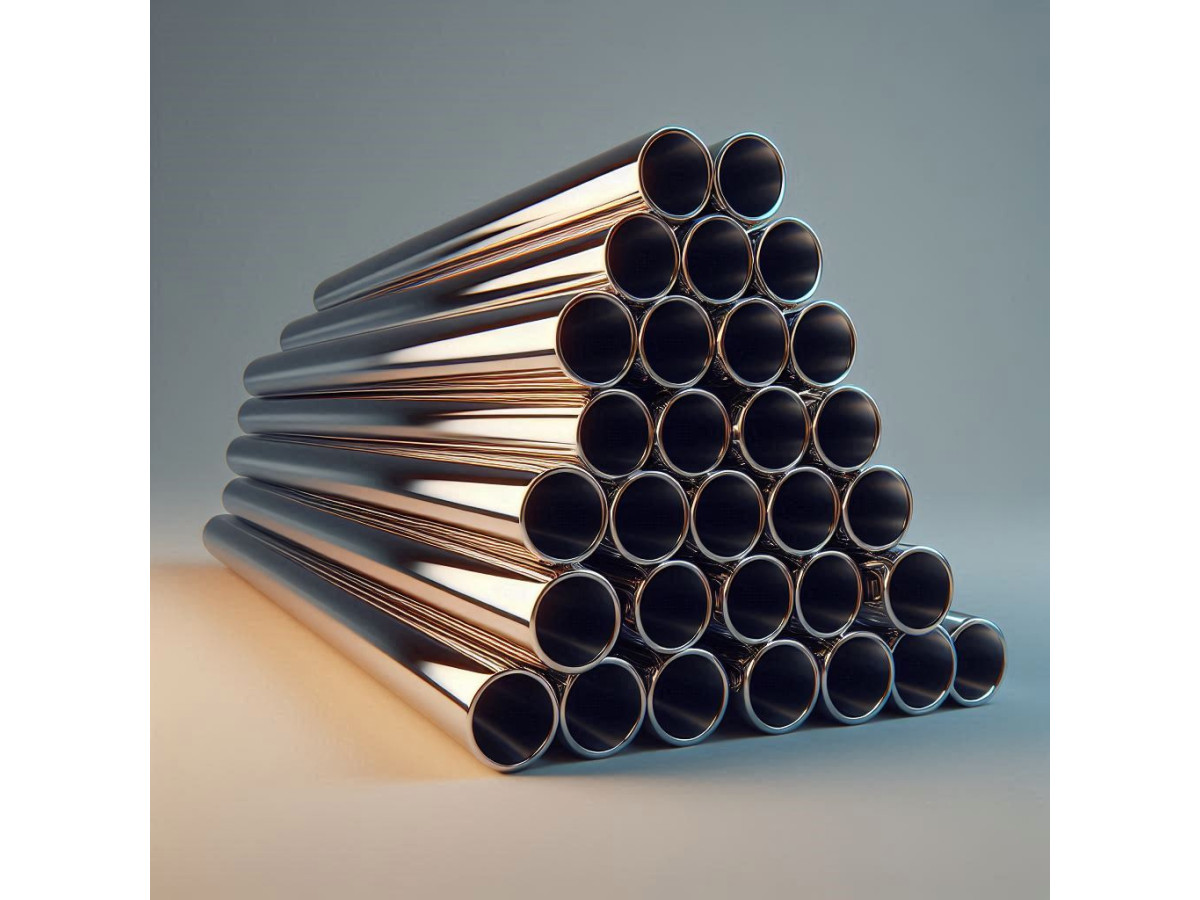Titanium pipes are a high-tech product in demand across various industries due to their unique properties. The manufacturing of these products is a complex, multi-stage process that requires strict adherence to technological standards and high qualifications of specialists. Let’s take a closer look at the main stages of titanium pipe production.
How are Titanium Pipes Made?
It all begins with the melting of titanium sponge, the primary raw material for producing titanium ingots. This process takes place in vacuum or inert gas furnaces at temperatures up to 1700°C. The molten metal is then poured into molds, where the ingots are formed. To improve the structure and properties of the finished product, electron-beam or plasma arc remelting of the ingots is employed.
The next stage is the rolling of the ingots. Here, it is especially important to ensure uniform heating of the workpiece and to precisely control temperature-deformation modes. Typical rolling methods include hot batch rolling, rotary forging, and pressing. As a result, tubular workpieces are produced.
To give the workpieces precise geometric dimensions and the required wall thickness, various methods of cold deformation are applied: drawing, cold rolling, and rotary drawing. These technological operations also significantly enhance the strength characteristics of the future pipes.
An integral part of the production process is heat treatment. Annealing, quenching, and aging allow for the optimization of the metal's structure and properties, eliminating internal stresses that arise during deformation. Special control of temperature regimes is required when working with titanium alloys.
Finishing of the Material
After all production stages, titanium pipes undergo finishing processes that give them their final appearance and properties:
- Mechanical processing (grinding, polishing) achieves the necessary surface cleanliness by removing processing traces and creating a smooth surface.
- Chemical-thermal treatment (passivation, anodizing) enhances the corrosion resistance of titanium by creating a protective layer on its surface.
- Quality control using non-destructive methods allows for the evaluation of the finished pipes' quality, identification of hidden defects, and confirmation of product compliance with technical requirements.
Thus, finishing is a crucial stage in the production of titanium pipes, ensuring their high quality and reliability in operation. An important feature of the titanium pipe production technology is the necessity of strict cleanliness at all stages. Even minor contamination can negatively affect the quality of the finished product. Therefore, production is organized under conditions of high manufacturing culture using specialized equipment.
Another important aspect is the use of a protective atmosphere during high-temperature operations. Interaction of titanium with oxygen, nitrogen, and other gases can lead to the formation of brittle compounds on the surface, deteriorating service characteristics. Therefore, melting, forging, and heat treatment are carried out in a vacuum or inert environment.
To ensure consistently high quality of titanium pipes, manufacturers pay special attention to monitoring at all stages of the technological process. Methods of chemical, mechanical, metallographic, and other types of analysis are applied. Special focus is given to maintaining cleanliness, preventing contamination, and precisely adhering to processing regimes.
Modern Trends in Production
Modern trends in titanium pipe production include:
- Development of new titanium alloys with improved properties (strength, corrosion resistance, heat resistance) allows for the creation of pipes for more demanding operating conditions.
- Automation and robotization of technological operations increase production accuracy, reduce the likelihood of human error, and enhance productivity.
- The introduction of additive technologies (3D printing) enables the creation of pipes with complex geometries and the manufacturing of unique parts, expanding the application possibilities of titanium.
- Improvement of non-destructive testing methods ensures high quality of the finished products by allowing for early defect detection.
- Increasing the eco-friendliness of production processes aims to reduce negative impacts on the environment and improve working conditions for employees.
Thus, titanium pipe production is a high-tech, science-intensive process that requires deep knowledge of metallurgy, metal forming, heat treatment, and other related fields. Implementing all necessary technological operations in strict compliance with requirements ensures the production of high-quality products that are in demand in the most advanced industries.

